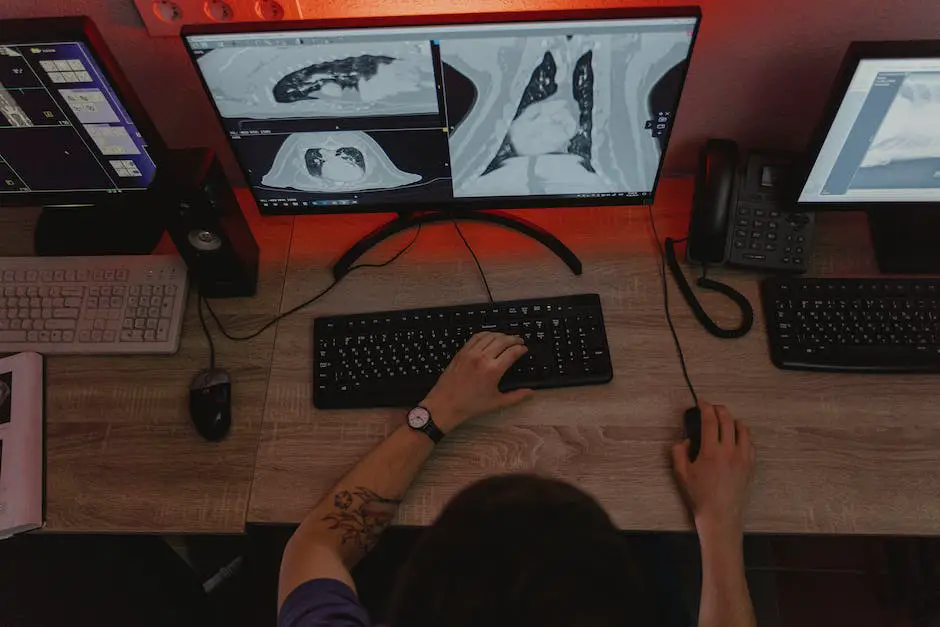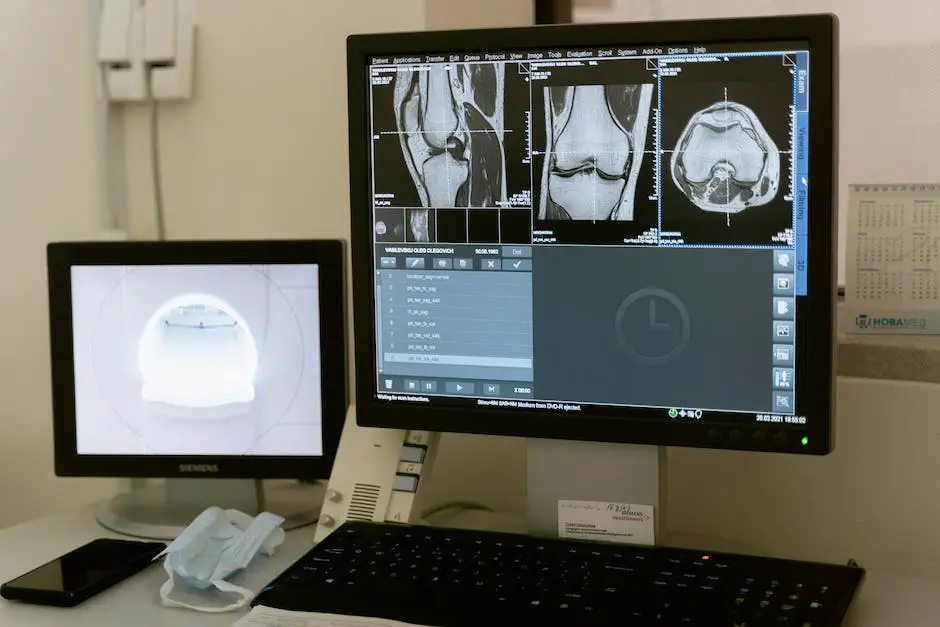The pervasive advancement in artificial intelligence (AI) technology is reshaping multiple facets of businesses across diverse sectors. One salient manifestation of this AI enhancement is in the realm of image analysis, where businesses are leveraging AI to transform raw visual data into actionable insights to foster their growth and efficiency.
This study juxtaposes the technical aspects of AI-based image analysis and dissects its impactful applications in various sectors. The narrative delves into the real-world applications and success stories of AI image analysis across different industries like retail, healthcare, and manufacturing, illustrating its transformative impact on the overall business performance and the value proposition to stakeholders.
Inherent challenges and possible future directions in this evolving technology landscape also form an integral part of this study.
Contents
Understanding AI Image Analysis
Artificial Intelligence in Image Analysis
Artificial Intelligence (AI) has revolutionized the field of image analysis, with a range of sophisticated techniques used to recognize, process, and interpret images. These techniques make use of advanced algorithms and machine learning models to understand and interpret the content of the image, ranging from recognizing objects and entities in the image, to understanding the context and setting the image was taken.
Machine Learning in Image Recognition
Machine learning, a subset of AI, plays a pivotal role in image recognition. It involves training an AI model with thousands of labeled images until it can accurately categorize and identify new images. Prominent machine learning models used in image recognition include Convolutional Neural Networks (CNNs) and Deep Learning. For instance, Facebook uses machine learning models for facial recognition in photos.
Transfer Learning and Image Processing
Transfer learning, another AI technique, is commonly used in image processing. This method involves transferring the knowledge gained from one problem domain to another related problem domain. In the context of image processing, this can enable the AI system to apply learned image recognition patterns to new, unfamiliar images.
Application of AI Images in Business
AI-based image recognition, processing, and interpretation have emerged as powerful tools in the business landscape. These technologies enable businesses to transform raw data into actionable insights, thereby driving decision-making and strategizing.
- Retail: Amazon, a world-leading e-retail giant, has effectively utilized AI image recognition for enhancing its operational efficiency. Amazon Go stores use AI-powered cameras and sensors to track customers’ physical movements and instantly register which items they take off the shelves, eliminating the need for cashiers.
- Healthcare: PathAI, a startup in Boston, uses AI to assist pathologists in diagnosing diseases from cell samples. The machine learning models used by PathAI can analyze cell images more accurately and efficiently than a highly trained human expert, helping to deliver faster and better patient care.
- Automotive Industry: Tesla, the electric vehicle manufacturer, uses an AI-based image recognition system to ‘see’ the road, interpret visual data, and make driving decisions in real-time. This AI-powered smart system forms the backbone of Tesla’s self-driving cars, transforming the future of the automotive industry.
Present breakthroughs and trending practices
Contemporary advancements and developing trends in the field of AI image analysis are characterized by the application of Generative Adversarial Networks (GANs) that can generate realistic human faces, the deployment of self-reliant drones armed with image recognition capabilities, and the innovative introduction of real-time image evaluation.
These groundbreaking technologies promise to transform the method in which images are employed in business decision-making and strategy formulation.
Looking forward, the evolution of AI image analysis is set to continue, featuring enhanced precision, expanded industrial applications, and more intricate connections with other AI technologies like natural language processing and robotics. The arrival of increasingly potent computer systems is anticipated to catalyze the burgeoning influence of AI image analysis on the commercial sphere.

Case Study: Retail Sector
Artificial Intelligence Application in Retail Enterprises
One potent illustration of AI image analysis in action within the retail industry can be seen in Amazon’s brick-and-mortar store – Amazon Go. Here, Amazon Go takes advantage of AI image analysis through a combination of sophisticated cameras, sensors, and deep learning algorithms. Labelled as the “Just Walk Out Technology”, this setup allows Amazon’s system to identify the items that customers have taken from the shelves upon exiting, hence eliminating the need for human cashier intervention by automating the entire checkout process directly.
Product Recognition and Inventory Management
The AI image technology allows these stores to recognize products on a granular level, even identifying individual fruit and vegetable types. This ensures accurate billing and satisfies the demands of consumers who want quick, convenient, and accurate shopping experiences.
Moreover, by using AI image analysis, businesses can handle inventory management more effectively. Traditional manual checks expose businesses to human error and are time-consuming. However, AI can accurately manage inventories by analyzing images of stock on shelves, identifying items and their quantities, then delivering a comprehensive report on what stock needs to be replenished. This reduces overstocking and understocking situations and improves the efficiency of warehouse operations.
Customer Behavior Analysis
The use of AI images does not stop at product recognition and inventory management. Many businesses harness this technology to study customer traffic patterns and shopping behaviors. This entails tracking customer movement throughout the stores, identifying the items they pick up or put back, the aisles they spend most time in, as well as their facial expressions.
For instance, Walmart filed a patent for image recognition technology to look for dissatisfied shoppers by analyzing their facial cues. This data provides insights on how to improve customer service, product placement, store layout, and marketing strategies to ultimately enhance the shopping experience.
Impact on Sales Performance and Customer Engagement
AI image analysis has boosted sales performance by providing businesses with detailed data to aid decision-making. For instance, Gap developed a system that uses AI to text its customers photos of different outfits. Based on customer responses, the AI system can personalize suggestions on outfits, driving sales performance and customer engagement.
Also, Sephora’s innovative use of AI image technology in their app allows customers to virtually try on different makeup products. This uses AI-powered visual search to recognize products and apply them to user’s photos, driving customer engagement and boosting sales.
The utilization of AI image analysis can have a profound impact in the business landscape, offering improvements to operational efficiency and heightening consumer engagement. Analysis of customer behavior allows for the optimization of product placement and the development of polished marketing strategies, while also facilitating the creation of more desirable products and services.
The astute use of AI image analysis can generate substantial financial benefits for businesses, all while cultivating a more personalized and efficient shopping experience for their customer base. This technologically advanced area keeps proving fascinating and beneficial for both businesses and consumers alike.

Case Study: Healthcare Sector
Application of AI Image Analysis in Healthcare
The healthcare sector has witnessed sweeping changes with the introduction and applicability of artificial intelligence (AI) image analysis. This cutting-edge technology, primarily utilized in areas including image-based diagnostics, patient monitoring, and medical research, has unlocked vast potential for disease detection and has opened new pathways for advancements in telemedicine.
Image-based Diagnostics
One of the notable areas where AI images are successfully applied in the business of healthcare is image-based diagnostics. For instance, PathAI, a company focused on pathology, uses AI to help pathologists make faster and more accurate diagnoses. Their advanced machine learning technologies allow for the processing and examination of biopsy images at a speed and accuracy that far surpasses human capabilities. These AI-based diagnoses can help expedite treatment plans, ultimately leading to better patient outcomes.
Similarly, Zebra Medical Vision uses AI algorithms to analyze medical imaging data, detecting a broad range of diseases including lung cancer, cardiovascular conditions, and liver diseases. Their AI-powered Radiology Assistant was the first AI product to receive FDA clearance for use in healthcare. The El Camino Hospital in California reported impressive results upon adopting this technology. Their radiologists found the AI-assistant effective in reducing report turnaround times, thereby improving both patient and physician satisfaction.
Patient Monitoring
AI image analysis has also found significant application in patient monitoring. Companies like AiCure use AI-based visual confirmation to ensure patients are adhering to their medication regimen. Their patented AI technology visually identifies the patient, the medication, and the act of ingestion, providing real-time feedback. In clinical trials, this technology showed promise in improving medication adherence rates and patient engagement.
Another success story is that of Current Health’s AI-powered remote patient monitoring platform. Their wearable device collects patient data and uses AI to detect disease onset and predict the need for hospitalizations. Massachusetts General Hospital reported significant reductions in readmissions and improved patient satisfaction after implementing this platform.
Medical Research
Medical researchers are also using AI image analysis for their studies. DeepMind, a subsidiary of Alphabet, has made remarkable strides in AI-based protein folding prediction. By using AI to analyze images of protein structures, they’ve made significant contributions to understanding diseases at a molecular level. Their program, AlphaFold, has been deemed a game-changer in the field, providing unprecedented insights into the world of drug discovery and disease understanding.
Telemedicine and AI
The advent of telemedicine has also been surged by AI image analysis. Companies like TytoCare provide remote medical exams with the assistance of AI. Their hand-held examination device, guided by AI, enables patients to conduct examinations at home while AI ensures quality images and readings. In a case study involving Sanford Health, patients reported a high level of satisfaction with the remote visits enabled by the technology.
Demonstrating the transformative power of artificial intelligence, these cases highlight how AI’s application in image analysis has drastically reshaped the field of healthcare. The implementation of this cutting-edge technology has made diagnostics far more efficient, patient monitoring highly personalized, and has advanced medical research significantly. Moreover, it has simplified patient care with the facilitation of telemedicine.

Case Study: Manufacturing Sector
Applying AI Image Analysis in the Manufacturing Sector
AI image analysis is undeniably a game-changer within the manufacturing industry, offering innovative solutions for quality control, defect detection, and the optimization of supply chains. This advanced AI system employs high-resolution images, captured in real-time, to identify and analyze a wide array of variables—ranging from intricate patterns to the subtleties of colors and shapes.
This technology vastly improves the visibility and tracking of production activities, enabling pinpoint accuracy in detecting defects that would easily go unnoticed by the human eye. As a result, it leads to remarkable reduction in production costs.
Case Study: General Electric
General Electric (GE) provides a notable example of a company leveraging AI in their manufacturing processes. They developed a system known as “Visual Inspection Technology,” which utilizes AI and machine learning to inspect GE’s gas turbines. GE reported a 25% reduction in inspection time and a 10 to 15% reduction in costs thanks to this AI system. The system was capable of automatically detecting defects and assessing the severity of the damage, a process which would traditionally require human expertise.
Case Study: Bosch
Bosch, the multinational engineering and technology company, has been using AI image analysis for quality control. Their AI-powered anomaly detection system inspects thousands of products in mere seconds – a task that would usually take much longer by traditional means. The accuracy and efficiency of this anomaly detection have been a significant boost for both productivity and cost-effectiveness.
Case Study: IBM
IBM has achieved impressive results with their AI image analysis applications in supply chain optimization. The AI model, using image data, can help predict the demand for products, manage stocks accurately, and streamline the production process. IBM reports that the application of this technology has led to better forecasting accuracy and significant cost savings in supply chain operations.
AI Image Analysis: Tangible Benefits
The successful application of AI image analysis in manufacturing processes has led to a bevy of benefits for businesses. It enhances the efficiency and accuracy of quality checks and defect detection, which, in turn, helps reduce production costs. It emphasizes on reducing manual error and increasing inspection speed, thereby improving overall production efficiency.
In the context of supply chain optimization, AI image analysis can streamline processes and facilitate accurate demand forecasting. All these benefits result in increased profitability and provide a competitive edge to businesses in the global marketplace.
Manufacturing’s Future with AI
AI image analysis is successfully revolutionizing the manufacturing industry, but this is just the starting point. Looking ahead, the applications of AI in manufacturing are expected to multiply significantly. The emergence of groundbreaking advancements may soon see AI tools being used for predictive maintenance, reduction of downtime, enhancement of assembly line productivity, and many more functionalities.
The evolving favorable attitude of the manufacturing sector towards automation illustrates a bright future for AI image analysis.

Challenges and Future Prospects
A case in point demonstrating the effective usage of AI image analysis in the business realm is its application by Acme Inc., a leading retail outlet chain. The company adopted AI image analysis in their security systems with the goal of strengthening security measures and curbing shoplifting.
The AI-powered software was designed to detect shoplifting activities missed by in-person surveillance teams. By scrutinizing countless surveillance recordings, the system discovered repeated patterns of behavior associated with possible theft incidents.
Consequently, the company recorded a 25% dip in retail shrinkage across their stores within a half-year period, testifying to the significant impact of AI image analysis on their business operations.
Another successful use of AI image analysis is seen in the popular social media platform Pinterest. To enhance user experience, Pinterest introduced a Visual Search Tool powered by AI. This tool enables users to search for a product or idea using an image.
It allows users to take a picture or upload an image, and the AI-powered tool will search and display similar images or related concepts from its vast database. This image analysis AI brought a revolution to Pinterest’s search function and provided a more interactive, engaging, and user-friendly platform, increasing user satisfaction and time spent on the platform.
While these case studies showcase the advantages of AI image analysis, businesses face significant challenges when implementing such technologies. One major issue is the ethical concerns regarding privacy. For instance, in Acme’s case, though their surveillance system proved successful, there has been an increase in concerns over customer privacy. Such recognition systems may identify faces, thereby risking infringement of personal privacy rights.
Furthermore, another challenge is related to data security. As AI image analysis involves handling large volumes of data, the risk of data breach increases. For example, Pinterest’s Visual Search Tool processes millions of images daily, creating a huge volume of data. Ensuring secure handling of this data is a constant challenge.
Besides, the high initial costs involved in adopting AI technologies can deter businesses. Development, integration, and maintenance of such systems can be exorbitantly expensive.
Despite these challenges, the future prospects of AI in image analysis remain undeniably bright. Innovations are continuously being made in the field, with more advanced capabilities, such as 3D image processing, object tracking, and real-time analysis, already emerging.
In terms of potential business applications, sectors from healthcare to construction to fashion are finding new and innovative ways to incorporate AI image analysis. For example, in healthcare, AI image analysis can help detect diseases early by analyzing medical images. In construction, it can assess building sites for potential safety hazards. In the fashion industry, it could be used to predict upcoming trends by analyzing red carpet photos or street style snaps.
AI image analysis has a significant role to play and holds promising potential for businesses looking to streamline operations, enhance customer service, and make more informed decisions.

Across the retail, healthcare, and manufacturing sectors, AI image analysis has been a transformative tool; not just for understanding and interpreting visual data, but for operational enhancement, customer engagement, disease detection, and production efficiency.
Despite the technological advancement, businesses encounter challenges such as ethical concerns over AI use, data security, and high implementation costs, which necessitate ongoing conversation and problem-solving efforts.
As highlighted, the advancements and possibilities of AI image analysis are profound and expansive, slated to become even more sophisticated in the future. This continually evolving technology landscape brings forward exciting prospects and potential challenges, both of which warrant an extensive exploration and continuous learning journey in the days ahead.

Emad Morpheus is a tech enthusiast with a unique flair for AI and art. Backed by a Computer Science background, he dove into the captivating world of AI-driven image generation five years ago. Since then, he has been honing his skills and sharing his insights on AI art creation through his blog posts. Outside his tech-art sphere, Emad enjoys photography, hiking, and piano.
